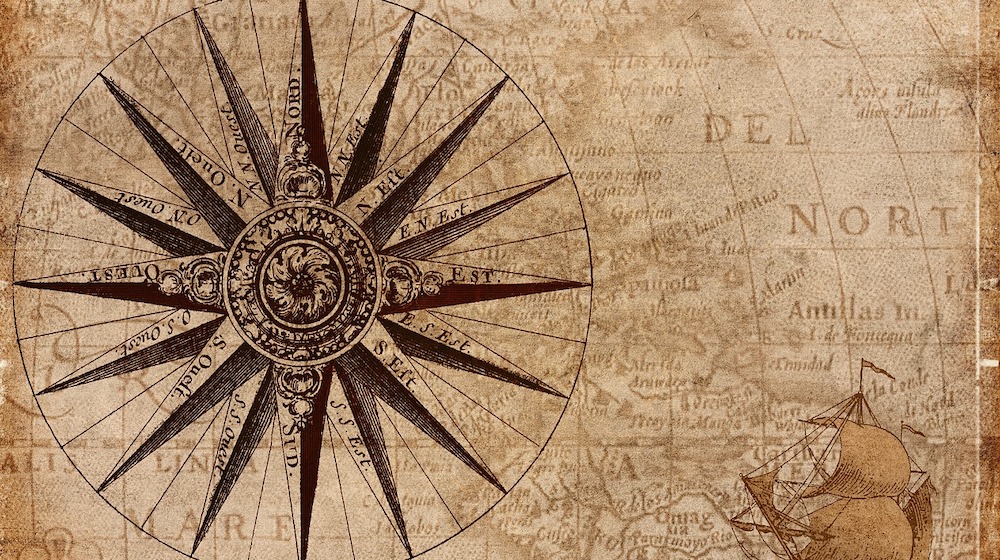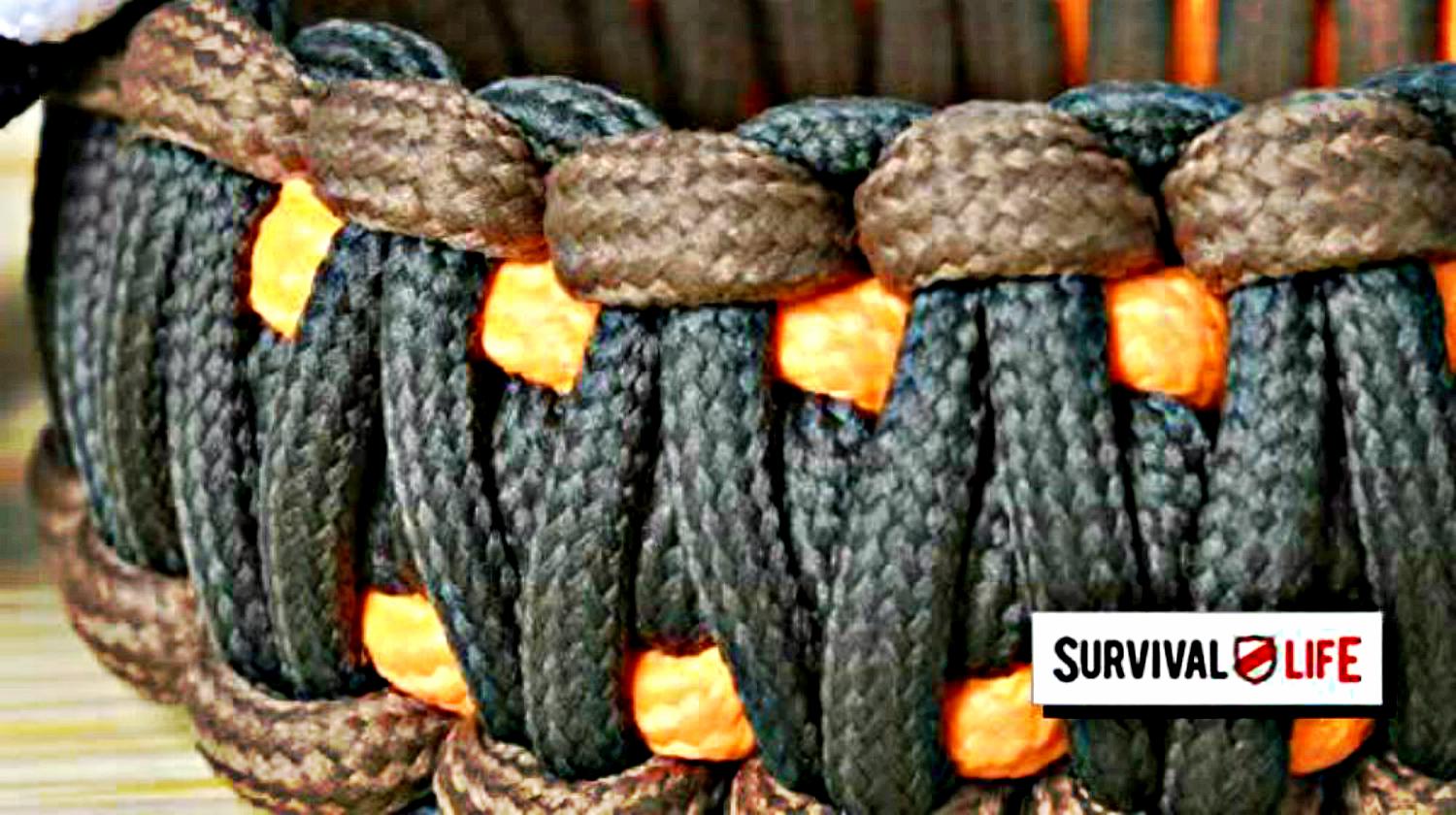Camping
Finding Yourself Lost?

It’s very easy to get lost while in the woods, or for that matter just about anywhere. I have been lost many times and am not ashamed to admit it. Getting lost is the easy part and can be accomplished through complacency, overconfidence or just poor dumb luck. There have been times where I was 110% sure that as soon as I crested a small hill, passed through a tree line, came out of a swamp, that I would be exactly in the place I had planned to go.,..only to end up standing there confused and wondering where the heck I was at. Throughout all of my adventures one essential tool remained at my side and that was the compass. I should note here that the compass never made a mistake or miscalculation, for sure anything that had to do with me getting lost can be attributed to human error.
What I would like to address today are some very basic uses and tips for utilizing a compass. None of these are beyond day one JROTC instruction. Additionally there is no requirement to have a military style topographical map to follow along. I choose to do it this way because the reality is while most preppers do have a compass in their BOB they would be lucky to have a road atlas in there too, much less a 1:50,000 MGRS topo map. You have to crawl before you can walk and walk before you can run. Consider this the crawl phase of compass basics.
What a compass is: A compass is a navigational instrument that measures directions in a frame of reference that is stationary relative to the surface of the earth. The frame of reference defines the four cardinal directions (or points) – north, south, east, and west. Intermediate directions are also defined. North corresponds to zero degrees, and the angles increase clockwise, so east is 90 degrees, south is 180, and west is 270. These numbers allow the compass to show azimuths or bearings, which are commonly stated in this notation.
Translation: A compass will tell you which direction you are going and pretty accurately too. It doesn’t need batteries, is cheap to purchase, is durable and will fit in your pocket.
Basic uses for a compass.
1- Calculate Cardinal Direction. It’s pretty simple, the compass knows which way is north. If you don’t have a military style compass pull out your iPhone and open up your Compass utility just to get a basic idea of what I’m talking about. If you stand in one spot and slowly turn you will see that the needle always points towards north (I’ll get into the different types of north in a bit). This matters because having a compass will help you to maintain your directional heading while in the woods. You might think you will be able to track the sun, the north star or find moss growing on a certain side of a tree but a compass will prove more accurate in just about every circumstance.
2- Orient a Map. In most instances the top of a map is north, be it a military map or a road atlas. This is important because combining the map with your compass will help you to ascertain which direction you are facing relative to the map. Let’s say you lay your road atlas down on the ground and then your compass on top of it. If you turn the map so that the top of the map is aligned with the north seeking arrow on your compass you are good to go. Now you can look at the map and easily differentiate which way you need to travel because it is “calibrated” in line with your physical location. If you see that you want to get to a road and it is on the right side of the map, that is east. You now know that you can walk (using your compass) at a heading of 90 degrees and eventually you will come to that road.
3- Assist in maintaining course heading. Now that you know the direction you need to travel you can utilize your compass to stay on course. Initially you might believe that it is easy to walk in a desired direction and you’ll have no problems. Nothing could be further from the truth, especially when traveling over uneven terrain or through swamps and especially at night. If you need to go at a 90 degree heading a compass will help you to stay on course the entire time.
Compass tips.
1- Know the difference between true vs magnetic north. A compass does not point to the north pole, or the exact center of the earth somewhere up there in the arctic. That in fact is true north. The compass points towards magnetic north, or a point on the earth’s northern hemisphere where the planet’s magnetic field points vertically downward. The difference between these two north’s is referred to as magnetic declination. For basic navigation and generally finding out where you are at over short (a few miles) distances it really isn’t all that big of a deal. Yet you should realize that there is a difference between where the arrow on your compass points and the actual top of the earth.
2- Do not use a compass near any metal objects. Using a compass inside of your vehicle, in a building or next to a metal fence could throw off your heading. Try to use your compass out in the open a few paces away from any metallic surfaces.
3- How to hold a compass. For ease of use I prefer to cup the compass in the palm of my hand and hold in next to my chest. I then look down at the compass and rotate my BODY, not the compass, when trying to “shoot an azimuth.” That’s fancy talk for making sure I’m facing the direction I need to be facing. Let’s say that I know I need to go east and that I know east = 90 degrees on the compass. I will hold the compass in the manner I previously described and rotate my body until I am facing east. I will then look up and identify an object (hilltop, tree, large rock, telephone pole) that is in my direction of travel. I can then put the compass away and start walking in that direction towards my destination. Upon reaching that first object I simply repeat the exercise and continue walking.
4- Alternate points of reference. I would avoid trying to glance down at the compass while on the move. Rather shoot your azimuth, find your point of reference and walk to it. Shoot another azimuth, put away the compass, walk to it and repeat. If you are using trees and telephone poles I would alternate which side of the reference point you end up on each time you arrive. This will help you to stay on course, almost like a self correcting technique.
5- Use the bezel ring. This portion is somewhat advanced but can be a real time saver. Military style compasses have what’s known as a bezel ring on the outside, just like the ones that can be found on many watches. This bezel ring usually as a tick mark on it, quite often it also illuminates at night. If you know that you need to go east (or 90 degrees) you can set the tick mark on your compass to 90 degrees once you align yourself in the right direction. Basically before you set off you align the tick mark on the bezel ring with the arrow on the compass. Once you are moving along to check your heading all you have to do is make sure that the arrow and tick mark are still aligned and move on, no waiting to check the proper degree every single time. This is especially helpful in low visibility situations.
View the original article at The Ultimate Prepper & Survivalist Blog.
How to Use a Compass and a Map
Compass: A Must-Have Survival Tool
Using A Compass 101
-

 Paracord Projects1 year ago
Paracord Projects1 year agoParacord Projects | 36 Cool Paracord Ideas For Your Paracord Survival Projects
-

 Paracord Projects1 year ago
Paracord Projects1 year agoHow To Make Paracord Survival Bracelets | DIY Survival Prepping
-

 Medical Care1 year ago
Medical Care1 year ago21 Home Remedies For Toothache Pain Relief
-

 Knife Laws1 year ago
Knife Laws1 year agoAre Switchblades Legal? Knife Laws By State
-

 Do It Yourself1 year ago
Do It Yourself1 year agoSurvival DIY: How To Melt Aluminum Cans For Casting













sally
May 23, 2013 at 7:07 AM
Great article. I gave compasses to all the men in my family for Christmas.
I jsut wish your site had a way to print out articles without having to also print *everything* else.
Jay
May 23, 2013 at 8:23 AM
Sally if you haven’t already install Evernote on your computer and then install clearly. When you find an article you want to save click clearly, it will capture just the article which you can then save in evernote. you can then print or email just the article. Hope this helps.
JJM
May 23, 2013 at 10:08 AM
I normally Highlight (or select) the article or portion thereof, and in my printer functions choose “Selection Only”. OR Copy and Paste to my text editor (Word, etc) and clean it up as desired for printing &/or save as a file.
Edward
May 23, 2013 at 7:33 AM
Go to your boy scout store and pick up the BSA handbook and or Field Guide. These two books will instruct you on compass use and basic first aid.The books were issued to pilots during WWII for survival. You do not have to be a scout to purchase one.
Rich
May 23, 2013 at 9:20 AM
Great article. Really enjoyed reading it. Good refresher for people that have not used a compass in a long time.
Sally, do what I do, copy and past the article then you can print it out.
Butch
May 23, 2013 at 12:40 PM
One of the best navigational books I’ve ever owned is the Green Beret’s Compass Course available at Pathfinder Publications 150 Hamakua Rd. Suite 401 Kailua, Hawaii 96734 I haven’t bought anything from them in quite some time so I hope they’re still in business!
JLA
May 23, 2013 at 1:33 PM
There is another technique that you can sometimes use to make navigation easier. It is to intentionally aim to end up a little ways off from your destination, but this only works if your destination, such as your camp or vehicle, is located along a barrier like a road or a river.
The way to do this is to aim to intersect the barrier (road, river, shoreline, fenceline, etc…) slightly off to one side of your destination. That way when you reach the barrier you will know for sure which way to go to get to your destination.
For instance, let’s say that you are camped along a river and, according to your map, you need to follow an azimuth of 90° through the woods to reach it. The problem with this is that if you proceed at exactly 90° and then end up at the river somewhere other than your camp you won’t know whether to go upstream or downstream to get to camp. (Precisely following an azimuth can be extremely difficult over rough, wooded terrain, especially if you are alone.) However, if instead of following a 90° azimuth you intentionally follow an azimuth of say 87°, or slightly to the North/left, when you reach the river you will know that you are north of your camp and that all you have to do to reach camp is to follow the river south/right for a ways. Obviously the specific terrain you are travelling over will dictate whether you should alter your course to the right or to the left. I’ve found this to be a much easier & much more reliable method of using a map & compass than trying to walk directly to my destination. (It’s also a good reason to always try to park/camp along some type a barrier that you can follow to find your way back!)
Note: This ONLY works if your destination is along some type of barrier that will stop your forward progress and give you something to follow along to reach your destination. If your camp is just in some random clearing in the middle of the woods this technique will NOT work!
snowman8wa
May 23, 2013 at 2:00 PM
Here is a NOAA link showing declinaton, note it changes year by year.
http://www.ngdc.noaa.gov/geomag-web/?id=igrfwmmFormId
Also, from my aviation experience; if you are off 1 degree at 60 miles, that equals 1 mile in error; or 88 feet of course error per mile. If you are off with the additional declination error, that increases the error by the declination. So say you do not orient your map and are 7 degrees off, magnetically. On a 7 mile straight hike 88 x 7 you would be 616 feet off course (not a big thing) but times the 7 degrees 616 x the 7 miles could put you 4,312 ft or 8/10ths of a mile off. Depending on terrain, that could be an issue.
United States Military’s most dangerous weapon…..a 2nd LT. with a lensatic compass in their hand and a map……..
Semper Vigilo, Fortis, Paratus et Fidelis
USMC Guy
May 23, 2013 at 4:05 PM
Good info, just remember if your body is covered with metal (M-4, ammo, magazines,) or you are standing near a vehicle it will throw off your readings when you hold the compass near your body. As I recall in the military we held the compass in the palm of their hand out and away from the body to negate some of this metal, never follow a 2nd Lt who takes his readings on a map/compass laying on the hood of his jeep…
landis
May 23, 2013 at 4:27 PM
Declinaton can be a very import thing.
Would not disregard it
thx
Kenneth Lewis
May 25, 2013 at 5:18 AM
Thank you. I picked up a couple of points the infantry did not teach us in WW2.
Andrew
June 5, 2013 at 5:48 AM
Fairly basic and standard guidelines for compass use, but nevertheless a great article particularly those new to orienteering. Keep up the good work!
ron
March 23, 2014 at 7:32 PM
thanks for the great tips.
Pingback: 7 Ways To Find True North Without A Compass | Survival Life
Pingback: 7 Ways To Find True North Without A Compass | Social Marketing
Pingback: 7 Ways To Find True North Without A Compass - Hobbies Questions Information Answers
Pingback: 7 Ways To Find True North Without A Compass - Hobby Guide To Everything
Pingback: 7 Ways To Find True North Without A Compass - Gardening Questions Information Answers
Pingback: 7 Ways To Find True North Without A Compass - Diet Guide To Everything
Pingback: 7 Ways To Find True North Without A Compass - Computer Guide To Everything
Pingback: 7 Ways To Find True North Without A Compass - Career Guide To Everything
Pingback: 7 Ways To Find True North Without A Compass - Headaches Help
Pingback: 7 Ways To Find True North Without A Compass - Health Guide To Everything
Pingback: 7 Ways To Find True North Without A Compass - Insurance Guide To Everything
Pingback: 7 Ways To Find True North Without A Compass - Dating Questions Information Answers
Pingback: 7 Ways To Find True North Without A Compass - Dating Guide To Everything
Pingback: 7 Ways To Find True North Without A Compass - Family Questions Information Answers
Pingback: 7 Ways To Find True North Without A Compass – Survival Magazine & News – The Patriot Revue
Pingback: 7 Ways To Find True North Without A Compass - The Self Reliant Princess News